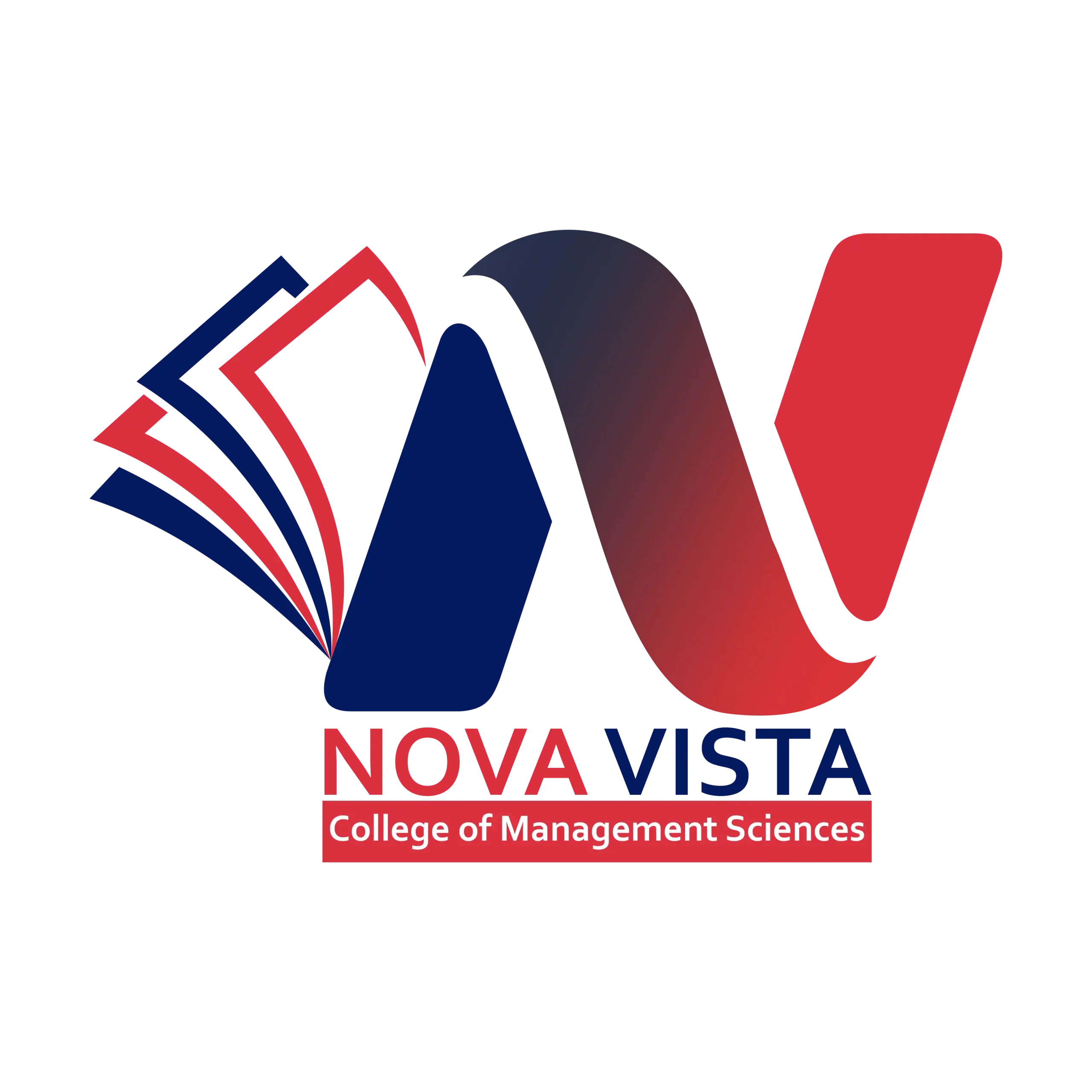The ICTQual AB Level 6 International Diploma in Occupational Health and Safety (OHS) is a comprehensive program designed for professionals who want to excel in workplace health, safety, and risk management. This internationally recognized diploma equips learners with advanced knowledge, practical skills, and the expertise needed to implement effective OHS strategies across industries globally.
Whether you are a recent graduate, safety officer, or an experienced professional aiming to enhance your career, the Level 6 Diploma in Occupational Health and Safety (OHS) provides a structured pathway to develop leadership, compliance, and operational safety skills. The course covers essential topics including risk assessment, hazard control, legislative compliance, accident investigation, emergency planning, and health and safety management systems, ensuring learners gain both theoretical understanding and practical proficiency.
Delivered in a learner-friendly format, the International Diploma in Occupational Health and Safety combines expert-led modules, case studies, and hands-on projects, allowing students to apply knowledge directly in real-world workplace scenarios. Learners will develop the ability to assess, plan, and implement health and safety measures that protect employees, optimize processes, and comply with global standards.
By completing the ICTQual Level 6 Diploma for OHS Professionals, you not only earn a globally recognized qualification but also gain the confidence and competence to pursue senior roles in occupational health and safety, risk management, and compliance. This diploma is ideal for anyone seeking to make a tangible impact on workplace safety, enhance professional credibility, and open doors to international career opportunities.
Take the next step in your professional journey with the ICTQual AB Level 6 International Diploma in Occupational Health and Safety (OHS) and transform your expertise into measurable workplace safety outcomes and career growth.
Awarding Body
ICTQual AB
Study Mode
Online
Qualification Level
Level 6
Completion Time
3-Years
Study Units
36 Mandatory Units
Assessments
Assignments & Evidences Based
| Qualification Title | ICTQual AB Level 6 International Diploma in Occupational Health and Safety (OHS) |
| Level | Level 6 |
| Total Credits | 360 |
| Assessment | Pass or fail Internally assessed and verified by centre staff External quality assurance by ICTQual AB verifiers |
To enrol in the ICTQual AB Level 6 International Diploma in Occupational Health and Safety (OHS), applicants must meet the following entry criteria:
Minimum Age
- Applicants must be 18 years of age or older at the time of registration.
Educational Background
- A minimum of a Level 5 qualification in health and safety, engineering, environmental management, or a related field is required.
- Graduates in science, nursing, industrial management, or occupational safety may also be considered.
- Foundational knowledge in workplace safety or health management is beneficial.
Work Experience
- Professional experience in occupational health and safety, industrial safety, or related fields is highly recommended.
- Applicants with at least 2–3 years of work experience in health and safety operations gain maximum benefit.
- Experienced professionals may follow a fast-track certification route (if applicable).
English Language Proficiency
- Since the course is delivered in English, learners must demonstrate good English communication skills (reading, writing, and speaking).
- Non-native English speakers may be asked to provide evidence of proficiency (e.g., IELTS, TOEFL, or equivalent).
This qualification, the ICTQual AB Level 6 International Diploma in Occupational Health and Safety (OHS), consists of 36 mandatory units.
Mandatory Units of ICTQual AB Level 6 International Diploma in Occupational Health and Safety (OHS)
This qualification, the ICTQual AB Level 6 International Diploma in Occupational Health & Safety (OHS), consists of 36 mandatory units.
Year 1 – Foundation of Occupational Health and Safety (OHS)
- Principles of Occupational Health & Safety Management
- International Health & Safety Legislation and Compliance
- Risk Assessment and Hazard Identification
- Accident Investigation and Incident Reporting
- Fire Safety and Emergency Preparedness
- Environmental Health & Safety (EHS) Fundamentals
- Workplace Ergonomics and Human Factors
- Safety Culture and Behavioural Safety
- Occupational Health and Industrial Hygiene
- Personal Protective Equipment (PPE) Management
- Workplace Safety Auditing and Monitoring
- Communication and Training in Health & Safety
Year 2 – Applied Occupational Health and Safety (OHS)
- Advanced Risk Management and Control Strategies
- Safety Leadership and Organizational Culture
- International Standards and ISO 45001 Implementation
- Construction and High-Risk Industry Safety
- Process Safety and Chemical Hazard Management
- Occupational Disease Prevention and Control
- Crisis and Disaster Management in the Workplace
- Transportation and Logistics Safety Management
- Contractor and Supply Chain Safety Oversight
- Sustainability and Corporate Responsibility in OHS
- Research Methods in Occupational Health & Safety
- Final Project / Professional Practice in OHS
Year 3 – Professional Competence and Specialized OHS Practice
- Strategic OHS Management and Policy Development
- Advanced Workplace Health Promotion and Well-being
- Safety Technology, Digital Tools, and Data Analytics
- Global Perspectives in Occupational Health & Safety
- Corporate Governance and Ethical Responsibilities in OHS
- Industrial Safety in Oil, Gas, and Energy Sectors
- Safety in Healthcare and Public Service Environments
- Emerging Risks and Future Trends in Workplace Safety
- Training Design and Development for OHS Professionals
- Independent Research Project in Occupational Health & Safety
- Professional Practice, Portfolio, and Competence Review
- Final Capstone Project / Dissertation
Upon successful completion of the ICTQual AB Level 6 International Diploma in Occupational Health and Safety (OHS), learners will be able to:
Year 1 – Foundation of Occupational Health and Safety (OHS)
1. Principles of Occupational Health and Safety Management
- Understand the fundamental principles of occupational health and safety management systems.
- Apply OHS concepts to analyze workplace safety risks and compliance requirements.
- Develop strategies to promote a proactive safety culture in organizations.
- Evaluate the effectiveness of health and safety management systems.
- Integrate OHS principles into organizational policies and operational procedures.
- Demonstrate awareness of professional responsibilities in workplace safety management.
2. International Health and Safety Legislation and Compliance
- Interpret international and national health and safety laws and regulations.
- Apply legislative requirements to workplace safety practices and policies.
- Ensure organizational compliance with local and global OHS standards.
- Assess legal obligations for employees and employers in various industries.
- Develop strategies to maintain ongoing compliance and risk mitigation.
- Evaluate the impact of legislation on organizational health and safety culture.
3. Risk Assessment and Hazard Identification
- Identify workplace hazards and assess associated risks effectively.
- Apply systematic risk assessment tools and methodologies.
- Develop and implement hazard control and mitigation measures.
- Prioritize risks based on severity and likelihood.
- Monitor and review risk management strategies for effectiveness.
- Enhance decision-making skills in risk prevention and safety planning.
4. Accident Investigation and Incident Reporting
- Conduct thorough workplace accident and incident investigations.
- Analyze root causes and contributing factors for incidents.
- Prepare accurate and compliant incident reports.
- Develop corrective actions to prevent recurrence of accidents.
- Integrate investigation findings into safety management improvements.
- Communicate incident outcomes to stakeholders effectively.
5. Fire Safety and Emergency Preparedness
- Understand fire hazards, prevention techniques, and emergency response procedures.
- Develop and implement workplace emergency preparedness plans.
- Conduct fire risk assessments and safety audits.
- Train employees on fire safety protocols and emergency drills.
- Evaluate the effectiveness of emergency management strategies.
- Apply fire safety knowledge to various workplace environments.
6. Environmental Health and Safety (EHS) Fundamentals
- Understand the relationship between occupational safety and environmental health.
- Identify environmental hazards affecting workplace safety.
- Apply EHS principles to improve operational sustainability.
- Develop strategies for pollution prevention, waste management, and resource conservation.
- Monitor and evaluate environmental compliance in workplace operations.
- Integrate EHS best practices into organizational safety programs.
7. Workplace Ergonomics and Human Factors
- Assess ergonomic risks and their impact on employee health and productivity.
- Apply ergonomic principles to design safer work environments.
- Analyze human factors contributing to workplace accidents.
- Recommend interventions to reduce ergonomic hazards.
- Evaluate the effectiveness of ergonomics programs in organizations.
- Promote employee well-being through ergonomic best practices.
8. Safety Culture and Behavioural Safety
- Understand the components of a positive safety culture.
- Apply behavioral safety principles to influence employee attitudes and actions.
- Identify barriers to effective safety culture adoption.
- Develop strategies to promote engagement and accountability.
- Evaluate organizational safety culture using relevant metrics and surveys.
- Implement behavior-based safety programs to reduce incidents.
9. Occupational Health and Industrial Hygiene
- Understand occupational health hazards and industrial hygiene practices.
- Conduct workplace exposure assessments for chemicals, noise, and biological agents.
- Recommend control measures to minimize health risks.
- Monitor employee health programs and compliance with regulations.
- Develop industrial hygiene policies aligned with international standards.
- Apply preventive strategies to protect workforce health and safety.
10. Personal Protective Equipment (PPE) Management
- Identify appropriate PPE for different workplace hazards.
- Implement PPE programs to ensure compliance and effectiveness.
- Train employees in the correct selection, use, and maintenance of PPE.
- Evaluate PPE performance and suitability in various operations.
- Integrate PPE requirements into broader safety management systems.
- Promote a culture of personal accountability for protective equipment use.
11. Workplace Safety Auditing and Monitoring
- Conduct systematic safety audits and inspections.
- Identify non-compliance and areas for improvement in OHS programs.
- Develop action plans based on audit findings.
- Monitor ongoing workplace safety performance and metrics.
- Apply corrective and preventive measures to improve safety outcomes.
- Ensure continuous improvement in organizational safety management.
12. Communication and Training in Health and Safety
- Develop effective OHS communication strategies for diverse audiences.
- Deliver workplace safety training programs using adult learning principles.
- Prepare clear and concise safety manuals, reports, and presentations.
- Foster engagement and participation in safety initiatives.
- Evaluate training effectiveness and adjust methods accordingly.
- Promote awareness and understanding of safety responsibilities at all levels.
Year 2 – Applied Occupational Health and Safety (OHS)
1. Advanced Risk Management and Control Strategies
- Apply advanced risk assessment techniques across diverse workplace environments.
- Develop and implement proactive hazard control strategies.
- Evaluate effectiveness of risk mitigation plans and procedures.
- Integrate quantitative and qualitative risk analysis methods.
- Ensure compliance with international safety standards and legislation.
- Enhance decision-making for complex workplace safety challenges.
2. Safety Leadership and Organizational Culture
- Develop leadership skills to influence positive safety culture.
- Implement strategies to engage employees in health and safety initiatives.
- Evaluate organizational culture and its impact on workplace safety.
- Promote accountability and proactive safety behaviors among teams.
- Align safety leadership with corporate governance and compliance goals.
- Foster continuous improvement in organizational safety performance.
3. International Standards and ISO 45001 Implementation
- Understand the principles and framework of ISO 45001 occupational health and safety management systems.
- Develop and implement safety management systems compliant with international standards.
- Conduct audits and gap analyses to ensure standard adherence.
- Integrate ISO 45001 principles into organizational policies and procedures.
- Monitor and evaluate effectiveness of OHS management systems.
- Apply continuous improvement techniques to maintain certification standards.
4. Construction and High-Risk Industry Safety
- Identify hazards and risks specific to construction and high-risk sectors.
- Apply safety management principles in complex and dynamic work environments.
- Develop emergency response and contingency plans.
- Evaluate compliance with sector-specific OHS regulations.
- Implement preventive measures to minimize workplace accidents.
- Promote safety awareness and training tailored to high-risk industries.
5. Process Safety and Chemical Hazard Management
- Analyze chemical, process, and operational hazards in industrial settings.
- Apply process safety management techniques to prevent accidents and incidents.
- Evaluate risk control measures for chemical, fire, and explosion hazards.
- Develop standard operating procedures for safe chemical handling.
- Monitor compliance with regulatory and industry-specific safety standards.
- Conduct process safety audits and incident investigations.
6. Occupational Disease Prevention and Control
- Identify occupational diseases and associated workplace hazards.
- Implement preventive measures to reduce workplace illness risks.
- Monitor employee health programs and exposure to hazardous agents.
- Apply epidemiological principles to workplace health assessment.
- Develop organizational strategies to promote occupational wellness.
- Evaluate the effectiveness of disease prevention and control programs.
7. Crisis and Disaster Management in the Workplace
- Develop and implement workplace crisis management plans.
- Assess potential disaster risks and their impact on operations.
- Coordinate emergency response and recovery procedures.
- Conduct drills and training to improve preparedness.
- Evaluate effectiveness of crisis management strategies.
- Integrate lessons learned into organizational resilience planning.
8. Transportation and Logistics Safety Management
- Identify safety hazards in transport and logistics operations.
- Implement safe practices in the movement of goods and personnel.
- Evaluate regulatory compliance for transportation safety standards.
- Develop risk mitigation strategies for logistics and supply chains.
- Monitor and audit transportation safety performance.
- Promote culture of safety within transportation and logistics teams.
9. Contractor and Supply Chain Safety Oversight
- Assess health and safety risks associated with contractors and suppliers.
- Develop compliance monitoring and auditing programs.
- Implement contractor management policies aligned with corporate OHS goals.
- Evaluate contractor performance and safety records.
- Promote accountability and safety culture across the supply chain.
- Integrate contractor oversight into organizational risk management frameworks.
10. Sustainability and Corporate Responsibility in OHS
- Integrate sustainable practices into occupational health and safety programs.
- Promote corporate social responsibility in workplace safety initiatives.
- Evaluate environmental and social impacts of safety programs.
- Develop strategies to balance operational efficiency with sustainability goals.
- Ensure compliance with international environmental and safety standards.
- Enhance organizational reputation through responsible OHS management.
11. Research Methods in Occupational Health and Safety
- Apply qualitative and quantitative research methods in OHS studies.
- Conduct literature reviews and data analysis for workplace safety projects.
- Develop research proposals aligned with practical industry challenges.
- Evaluate research findings to inform safety policies and strategies.
- Prepare professional reports and presentations based on research outcomes.
- Enhance analytical and critical thinking skills for evidence-based decision-making.
12. Final Project / Professional Practice in OHS
- Apply knowledge from previous units to real-world workplace scenarios.
- Plan, execute, and evaluate a comprehensive OHS project.
- Conduct risk assessments, audits, and safety evaluations as part of practice.
- Develop professional documentation and reporting skills.
- Demonstrate problem-solving, leadership, and technical competence.
- Showcase readiness for advanced professional roles in occupational health and safety.
Year 3 – Professional Competence and Specialized OHS Practice
1. Strategic OHS Management and Policy Development
- Develop strategic occupational health and safety policies aligned with organizational goals.
- Evaluate the effectiveness of OHS policies across industries.
- Integrate legislative, ethical, and business considerations into policy design.
- Promote proactive safety culture through strategic initiatives.
- Align OHS management with organizational performance objectives.
- Demonstrate leadership in strategic safety planning and decision-making.
2. Advanced Workplace Health Promotion and Well-being
- Design programs to enhance employee health and wellness.
- Implement strategies to reduce workplace stress and improve productivity.
- Evaluate organizational well-being initiatives for effectiveness.
- Integrate mental health and ergonomic considerations into OHS programs.
- Promote employee engagement and participation in health programs.
- Develop metrics to monitor and improve workplace health outcomes.
3. Safety Technology, Digital Tools, and Data Analytics
- Apply digital tools and safety technologies to monitor workplace hazards.
- Utilize data analytics to identify trends and predict risks.
- Implement smart systems for real-time health and safety monitoring.
- Evaluate technology solutions to enhance compliance and efficiency.
- Integrate digital reporting tools into OHS management systems.
- Use predictive analytics to support proactive risk management strategies.
4. Global Perspectives in Occupational Health and Safety
- Analyze OHS practices and regulations across different countries and regions.
- Compare international safety standards and their impact on organizations.
- Develop strategies for global compliance and workforce safety.
- Integrate cross-cultural considerations into OHS management.
- Promote international best practices in occupational health and safety.
- Enhance professional competence for global workplace safety roles.
5. Corporate Governance and Ethical Responsibilities in OHS
- Apply ethical principles in occupational health and safety decision-making.
- Understand corporate governance frameworks and compliance requirements.
- Promote transparency and accountability in OHS programs.
- Develop strategies to ensure organizational integrity and legal compliance.
- Evaluate ethical challenges and propose responsible solutions.
- Integrate ethical considerations into leadership and policy development.
6. Industrial Safety in Oil, Gas, and Energy Sectors
- Identify hazards specific to oil, gas, and energy operations.
- Apply industry best practices for risk management and operational safety.
- Develop emergency response and contingency plans for high-risk sectors.
- Monitor and audit safety compliance in industrial operations.
- Evaluate technological solutions to enhance safety and efficiency.
- Implement preventive strategies to reduce workplace incidents and injuries.
7. Safety in Healthcare and Public Service Environments
- Identify occupational risks in healthcare and public service sectors.
- Develop strategies to mitigate hazards affecting employees and clients.
- Implement infection control, ergonomic, and emergency response measures.
- Evaluate compliance with healthcare-specific OHS standards.
- Promote safety culture in patient care and public service settings.
- Apply evidence-based strategies to enhance workplace health outcomes.
8. Emerging Risks and Future Trends in Workplace Safety
- Identify and assess emerging hazards in modern workplaces.
- Apply proactive strategies to manage new and evolving risks.
- Utilize research and data to anticipate future OHS challenges.
- Integrate innovative technologies and methodologies in safety programs.
- Develop adaptive management strategies for changing work environments.
- Promote organizational resilience against future workplace risks.
9. Training Design and Development for OHS Professionals
- Design effective health and safety training programs for diverse audiences.
- Apply adult learning principles to enhance training outcomes.
- Evaluate training effectiveness using assessment and feedback mechanisms.
- Develop training materials and digital resources for workplace learning.
- Promote knowledge transfer and employee engagement in safety programs.
- Integrate continuous learning into organizational safety culture.
10. Independent Research Project in Occupational Health and Safety
- Conduct in-depth research on complex OHS issues.
- Apply advanced research methodologies and analytical techniques.
- Develop actionable recommendations based on research findings.
- Prepare professional reports and presentations for stakeholders.
- Integrate research outcomes into policy, practice, and safety management.
- Demonstrate critical thinking, problem-solving, and professional competence.
11. Professional Practice, Portfolio, and Competence Review
- Compile evidence of practical skills, achievements, and learning outcomes.
- Conduct self-assessment and reflective evaluation of professional competence.
- Demonstrate mastery of occupational health and safety standards.
- Present a professional portfolio showcasing practical and theoretical expertise.
- Identify areas for further development and lifelong learning.
- Validate readiness for leadership and advanced OHS roles.
12. Final Capstone Project / Dissertation
- Apply comprehensive knowledge from all units to a real-world OHS challenge.
- Conduct project planning, implementation, and evaluation in professional settings.
- Analyze data and develop evidence-based solutions for workplace safety issues.
- Prepare and present a formal dissertation or project report.
- Demonstrate strategic thinking, problem-solving, and project management skills.
- Showcase readiness for senior-level OHS positions or further academic study.
The ICTQual AB Level 6 International Diploma in Occupational Health and Safety (OHS) is designed for a wide range of learners seeking to advance their careers in workplace safety, risk management, and compliance. Whether you are a recent graduate, an experienced safety professional, or a business leader, this course equips you with practical skills, advanced knowledge, and international accreditation. Learners will gain expertise in hazard identification, risk assessment, emergency preparedness, and strategic OHS management. This program is ideal for anyone aiming to enhance professional credibility, improve workplace safety culture, and pursue leadership roles in occupational health and safety globally.
1. Aspiring Occupational Health and Safety Professionals
- Recent graduates aiming to start a career in OHS management.
- Individuals seeking internationally recognized certification in workplace safety.
- Learners interested in gaining practical and theoretical OHS skills.
- Candidates looking to understand hazard identification and risk assessment.
- Individuals seeking a foundation for advanced OHS roles.
- Those aiming to enter industries such as manufacturing, construction, or healthcare.
2. Experienced Health and Safety Practitioners
- Safety officers and supervisors looking to formalize their expertise with a Level 6 diploma.
- Professionals aiming to advance into managerial or leadership roles in OHS.
- Individuals seeking to update knowledge on international OHS standards and ISO 45001.
- Experienced staff wanting to improve incident investigation and risk management skills.
- Professionals aiming for global recognition and career mobility.
- Those targeting strategic or advisory positions in occupational health and safety.
3. Industrial and Workplace Supervisors
- Team leaders responsible for implementing workplace safety programs.
- Supervisors in high-risk sectors such as construction, manufacturing, and energy.
- Individuals tasked with employee training and safety awareness initiatives.
- Professionals overseeing operational compliance and hazard prevention.
- Those seeking to enhance safety culture and behavioral safety within teams.
- Staff responsible for monitoring, auditing, and reporting workplace safety performance.
4. Professionals Transitioning into OHS
- Engineers, managers, and technical staff seeking to specialize in occupational health and safety.
- Individuals with prior experience in related fields wanting to expand skillsets.
- Career changers aiming to move into OHS roles across industries.
- Professionals seeking knowledge in risk management, emergency preparedness, and regulatory compliance.
- Individuals targeting sustainable and responsible workplace safety practices.
- Those seeking structured, internationally recognized OHS training for career advancement.
5. Entrepreneurs and Business Owners
- Business owners aiming to implement effective health and safety management in their organizations.
- Entrepreneurs seeking knowledge of legal compliance and OHS best practices.
- Professionals aiming to develop internal safety programs for employees and contractors.
- Individuals looking to integrate sustainability and corporate responsibility into workplace safety.
- Those interested in reducing operational risks and promoting workforce well-being.
- Leaders wanting to enhance corporate reputation through robust OHS policies.
6. Professionals in Specialized Industries
- Employees in oil, gas, energy, healthcare, and public service sectors.
- Professionals responsible for high-risk operations and critical infrastructure safety.
- Staff tasked with chemical, process, and construction safety management.
- Individuals managing contractor and supply chain safety compliance.
- Those seeking advanced skills in occupational disease prevention and crisis management.
- Employees aiming to implement cutting-edge technology and data analytics in OHS programs.
7. Learners Preparing for International Careers or Further Studies
- Graduates aiming to pursue postgraduate qualifications in OHS or related fields.
- Professionals seeking career opportunities in multinational corporations or global industries.
- Individuals targeting senior OHS roles or consultancy positions.
- Learners preparing for international certifications and recognition.
- Those aiming to gain expertise for leadership, research, and policy-making roles.
- Professionals wanting to enhance global employability and credibility in occupational health and safety.
As an approved ICTQual AB center, we provide learners with a clear and structured pathway to achieve the internationally recognized Level 6 Diploma in Occupational Health and Safety (OHS). Learners must enroll with our center to access course materials, submit assignments, and receive official certification.
1. Experienced Professionals Route
This route is designed for individuals with at least 6 years of verifiable professional experience in occupational health and safety, industrial safety, or related fields. Key features include:
- Recognition of prior industry experience in place of completing all 36 units.
- Submission of documented evidence validating work experience and professional competence.
- Assessment tailored to demonstrate knowledge, skills, and practical expertise in OHS.
- Mentorship and guidance from certified OHS instructors throughout the evaluation process.
- Direct awarding of the ICTQual AB Level 6 International Diploma in Occupational Health and Safety (OHS) upon successful verification.
- Ideal for professionals seeking fast-track recognition of existing expertise and global certification.
2. Fresh Candidates / Learners Route
This route is suitable for recent graduates or individuals without prior professional OHS experience. Key features include:
- Completion of all 36 study units and associated assignments is mandatory.
- Access to full course materials, expert-led instruction, and online support.
- Hands-on projects, case studies, and practical exercises to apply learning in real-world scenarios.
- Development of advanced skills in hazard identification, risk assessment, emergency preparedness, and strategic OHS management.
- Successful completion leads to the internationally recognized ICTQual AB Level 6 Diploma in OHS.
- Perfect for learners aiming to build a strong foundation and pursue professional roles in workplace safety globally.
Register Now
Related Qualifications

ProQual Level 3 NVQ Certificate in Occupational Health and Safety

ProQual Level 7 Diploma in Occupational Health and Safety Management

ProQual Level 3 Certificate in Assessing Vocational Achievement



